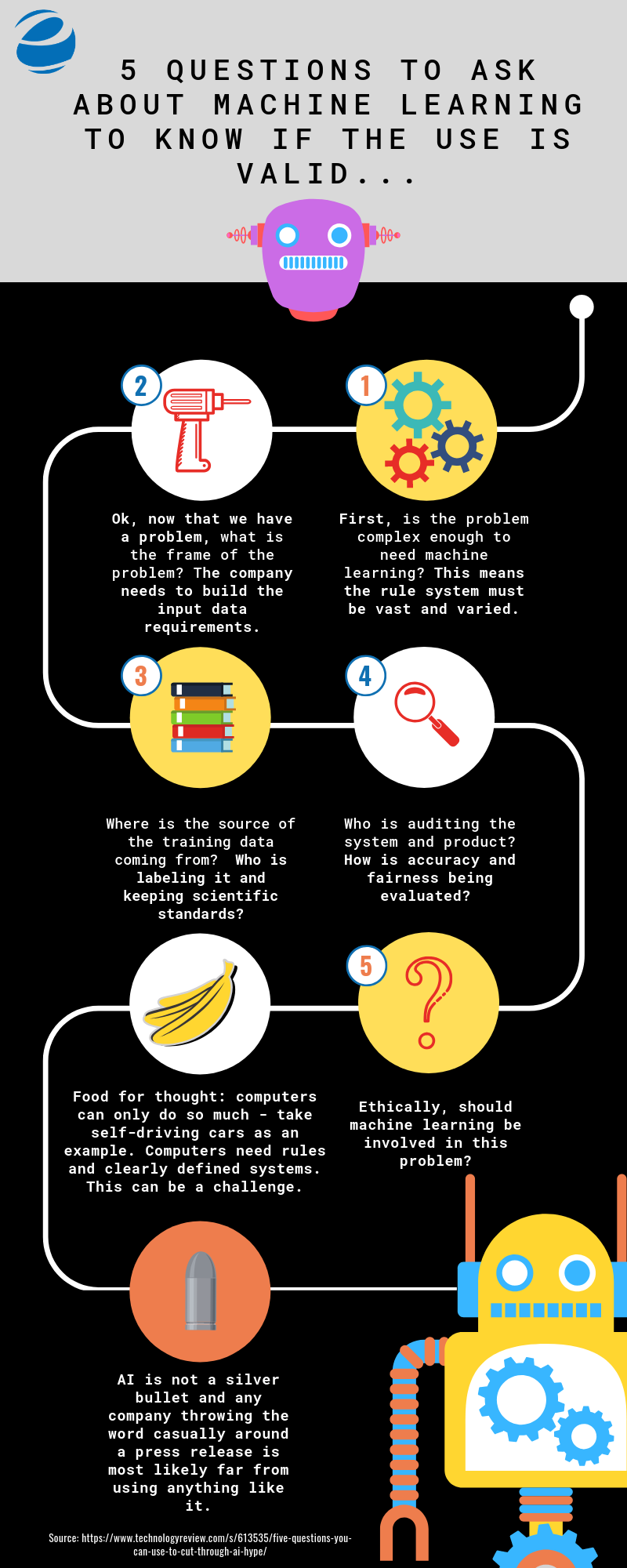Written by: Stephen L Kanaval Artificial intelligence and machine learning have passed into that troubling phase of an innovations lifecycle: becoming a buzz word. As these two words get thrown into press releases and tossed about on conference calls, listeners begin to lose sight of the actual definition of the innovation, its scope and even its limitations. It happens in the tech sector year after year - enlightenment turns to hope and high hope turns into hype. For example, venture capitalist firms staked 1,028 A.I.-related startups in 2018, up from 291 in 2013, according to PitchBook.The facts are that many companies claiming to use artificial intelligence or machine learning are using simple data analysis like descriptive analytics by using historical data and even predictive analysis query data, historical patterns and assumptions.However, machine learning is the ability for a computer program to analyze data, test hypotheses and assumptions and learn from each test autonomously . The latter is completely different and allows for faster and more detailed analytics and micro-targeting not possible with typical data science.Now, don't get me wrong, artificial intelligence and machine learning are evolving business and our social fabric by the day - it is estimated it will add 1.2% to GDP over the next decade. Just think, when you take a selfie there is an artificially intelligent algorithm in your phone that scans and tracks your head for camera placement. There are over 154,000 AI patents worldwide and between 2013 and 2018 the number grew by 34%, according to IFI Claims Patent Services.
AI and Cannabis
However, no industry more egregiously uses the promise of machine learning and AI to hype investors than the cannabis industry. Of course, the cannabis industry and the investment thesis on many a company is built - rather openly, actually - on hype. To be fair, the cannabis industry is nascent, oscillating regulations and federal gray areas make accurate predictions and true value analysis pretty impossible. Still, many companies are hyping AI and machine learning software programs that help with e-commerce, marketing and customer care and often these claims and infrastructure outlines and white papers do not pass the smell test because of the lack of actual data.In order for AI applications to run, manually supervised machine learning must be employed. This means inputting strategically and consistently labeled training data, and that same data needs to be scrubbed and high-quality. If training data is not cleaned and labeled, it can lead to AI biases and poor results that don't reflect real world applications. In addition, the algorithms need to be audited as well as the deep-learning models set up at the outset.The truth is there are very few companies in the cannabis industry that are getting even close to this level of AI, and if they are, they are most likely farmers or technology-focused agronomic companies like Motorleaf .Motorleaf uses algorithms to predict crop yields, but it takes a lot of effort and time. The company takes thousands of measurements via sensors and hardware to obtain enough data to make predictive indexes on plants and for specific producers. Only after collecting this level of data can Motorleaf begin to write the algorithm and test it against the data gathered from the soil.


